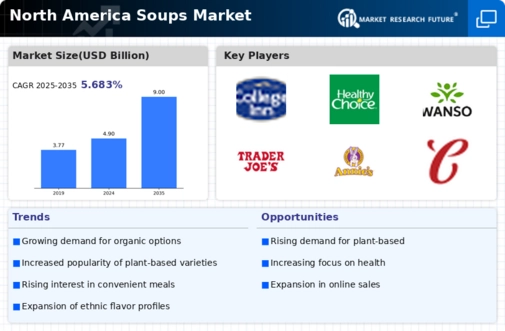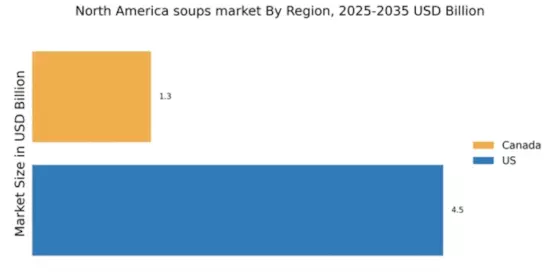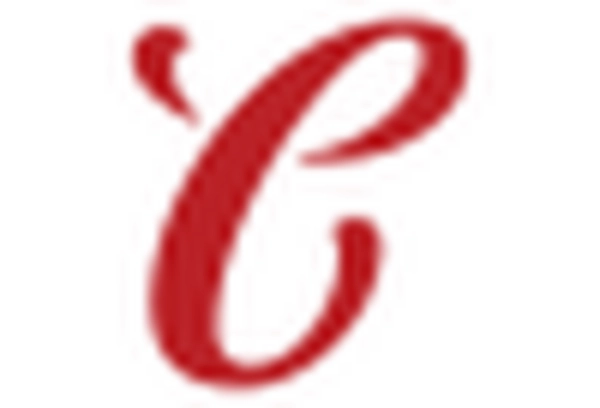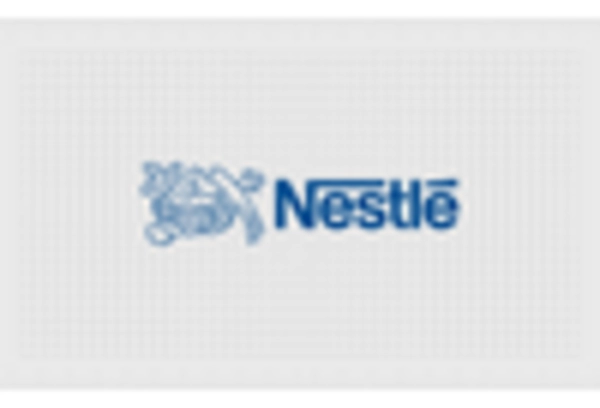Emphasis on Clean Label Products
In the current landscape, the soups market is witnessing a pronounced emphasis on clean label products, as consumers become more conscious of ingredient transparency. There is a growing demand for soups made with natural, recognizable ingredients, free from artificial additives and preservatives. This trend is indicative of a broader movement towards healthier eating habits and a desire for authenticity in food products. Recent surveys reveal that approximately 70% of consumers prefer products with clean labels, which has prompted manufacturers to reformulate their offerings. The soups market is responding by highlighting the quality and sourcing of ingredients, thereby appealing to health-conscious consumers. This focus on clean labels not only enhances brand trust but also positions companies favorably in a competitive market, suggesting that this trend will continue to shape product development strategies in the foreseeable future.
Expansion of E-commerce Channels
The soups market is experiencing a significant transformation due to the expansion of e-commerce channels. With the increasing reliance on online shopping, consumers are now more inclined to purchase food products, including soups, through digital platforms. Recent data indicates that online grocery sales have surged by over 30% in the past year, highlighting a shift in consumer purchasing behavior. This trend presents a substantial opportunity for the soups market to reach a broader audience and enhance accessibility. Brands are investing in their online presence and optimizing their supply chains to meet the growing demand for home delivery. As e-commerce continues to evolve, it is likely that the soups market will see increased competition and innovation in online marketing strategies, potentially reshaping the way consumers interact with soup products.
Growing Interest in Functional Foods
The soups market in North America is increasingly influenced by the rising interest in functional foods, which are perceived to offer health benefits beyond basic nutrition. Consumers are becoming more discerning, seeking soups that provide added health advantages, such as immune support, digestive health, and enhanced energy levels. This trend is reflected in the introduction of soups fortified with vitamins, minerals, and probiotics. Recent market analysis suggests that functional soups have seen a growth rate of approximately 20% in the last year. This shift indicates a potential for brands to differentiate themselves by emphasizing the health benefits of their products. The soups market is likely to capitalize on this trend by developing innovative recipes that cater to health-conscious consumers, thereby expanding their market share and enhancing brand loyalty.
Increased Focus on Convenience Foods
In the fast-paced lifestyle of North America, the soups market is witnessing a growing preference for convenience foods. Busy consumers are increasingly seeking quick meal solutions that do not compromise on taste or nutrition. Ready-to-eat and instant soups are gaining traction, as they offer a practical option for those with limited time for meal preparation. Recent statistics indicate that the ready-to-eat segment of the soups market has expanded by 15% over the past year. This trend is likely to continue, as manufacturers innovate with packaging and flavors to cater to the on-the-go consumer. The industry is responding by introducing single-serve options and microwaveable packaging, which enhance the convenience factor. As a result, the soups market is evolving to meet the demands of a time-constrained population, potentially leading to increased sales and market penetration.
Rising Demand for Plant-Based Options
The soups market in North America is experiencing a notable shift towards plant-based options, driven by increasing consumer awareness regarding health and environmental sustainability. As more individuals adopt vegetarian and vegan diets, the demand for plant-based soups has surged. According to recent data, the plant-based food sector has grown by approximately 27% in the last year alone. This trend indicates a significant opportunity for manufacturers to innovate and expand their product lines to include more plant-based offerings. The soups market is likely to benefit from this shift, as consumers seek healthier alternatives that align with their dietary preferences. Additionally, the rise of flexitarian diets, where consumers reduce meat consumption without fully eliminating it, further supports the growth of plant-based soups, suggesting a long-term trend that could reshape the market landscape.


















Leave a Comment